Led by Lloyd Park, Rutland Water Reserves Officer. The society had an excellent walk around the reserve encountering many of the winter wildfowl and birds of the reserve. Of special note were good views of the Smew which regularly make this reservoir their winter home.
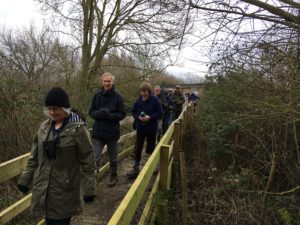
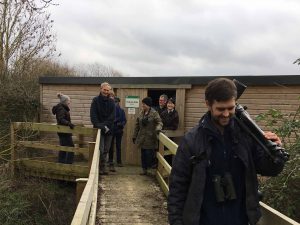
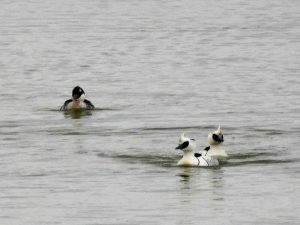
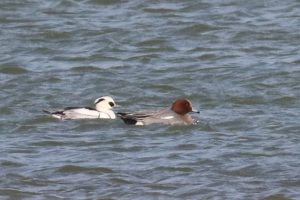 Photo Smew and Wigeon
Photo Smew and Wigeon
Full report from Linda Biddle
The morning promised well – light broken cloud, and a temperature that for February was exceptional – 10 degrees at 9.30am! 12 members met our leader Lloyd Park, RW Conservation Officer, at the Egleton Birdwatching Centre to take a walk to some of the hides to see what was on the water. Birdsong was everywhere as we walked to the first hide, a Song Thrush belting out his tune, and Great Tits “belling”- a loud repetitive two note call, Blue Tits tsee-tseeing and Dunnock and Robin with their thin high songs among the bare hawthorn branches. From the first hide the views of wildfowl were great – smart Pintail male and female upending to collect food from beneath the water, lots of Tufted Duck, Teal, Coot, Mallard and lovely Gadwall, showing their immaculate black and brown plumage as the sun peeped through and lit up the water. A Grey Heron was standing on the edge of the water on a nearby island. We spent quite some time here, enjoying the views and the activities of the birds as they went about their business. En route to the next hide we heard the bold insistent song of a Wren, and the scree… of a Tree Creeper- though even our leader’s sharp eyes and ears failed to locate the secretive little bird!
At the next hide looking across open water to the far reedbeds, we were treated to excellent views of a Great White Egret – its great size and yellow bill distinctive in comparison to the rest of the wildfowl. Pochard, Wigeon, Great Crested Grebe were most numerous here and strikingly smart black and white Goldeneye submerged and popped up so that tracking their movements with binoculars was quite difficult. On the bird feeders at the edge of the reeds male and female Reed Buntings flittered about, flocking like sparrows as they fed on the platforms. Our final stop was at one of the newer lagoons, where the water was shallower and the islands numerous. At this point the sun was behind us, and the light perfect for seeing the colourful plumage of the birds. Here beautiful Goosander cruised along, low in the water, the males with blue-black heads against whitish bodies, the females or redheads with orange brown crested heads and greyer plumage. Canada Geese, swans and lots of gulls, were seen, Black Headed Gulls with breeding plumage all ready obvious, Common Gulls among them making up the numbers. Two Curlew flew across in front of us. Most spectacular of all were a flotilla of Smew, two splendid males and three females, which gradually approached the hide, diving down and reappearing, getting closer and closer so that we could eventually see every line in the black and white plumage of the males, and the light patches under the beaks of the females, as they postured and showed off in preparation for the breeding season. The conditions had been ideal, and our leader expertly described and pointed out the wildfowl so that we all learned new species. The morning had passed amazingly quickly, and in all we identified a total of 62 species in just over 2 hours.
 Photo Goldeneye
Photo Goldeneye



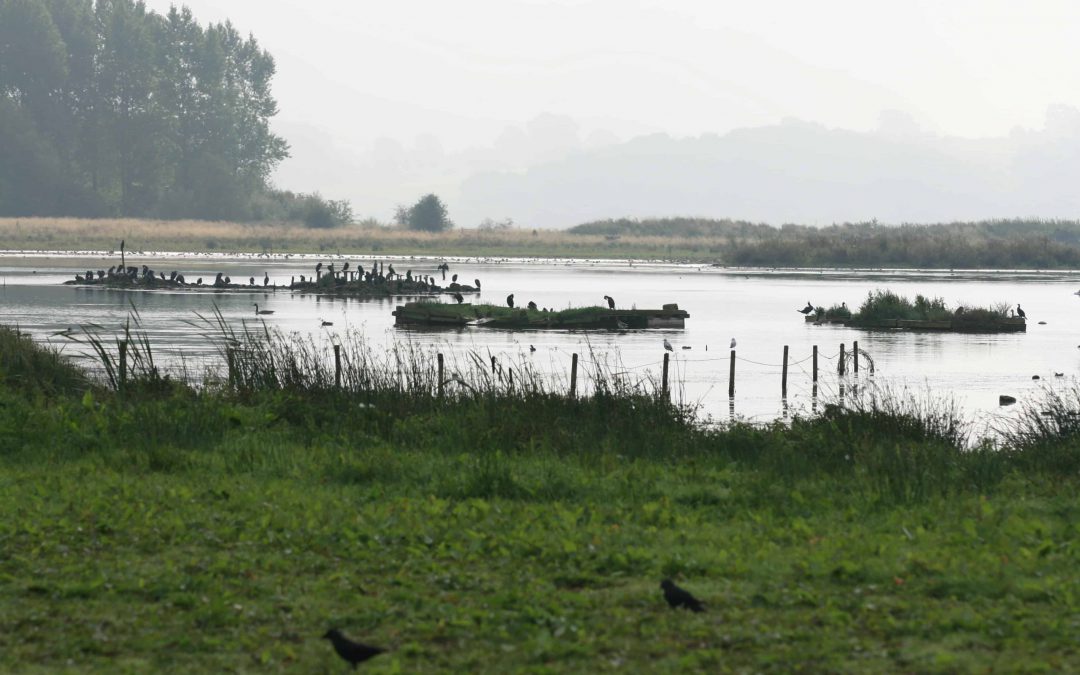
 Photo Smew and Wigeon
Photo Smew and Wigeon Photo Goldeneye
Photo Goldeneye